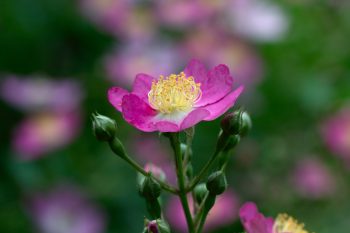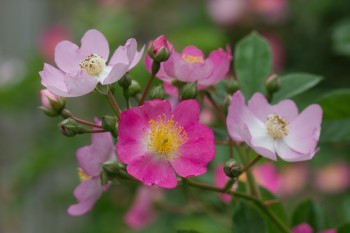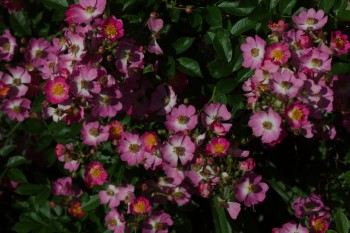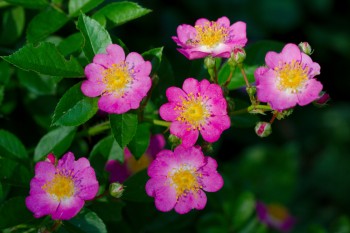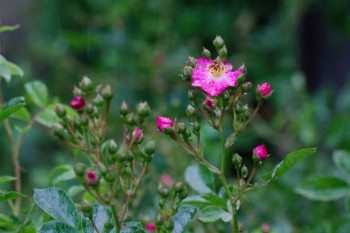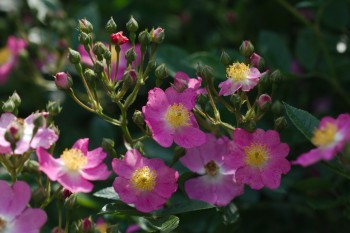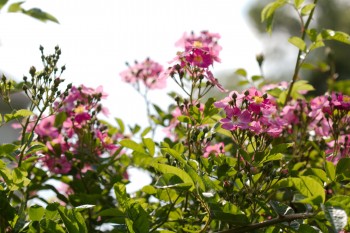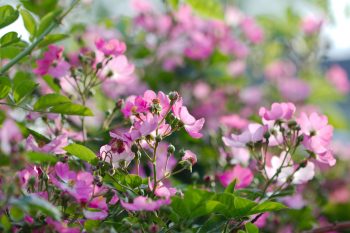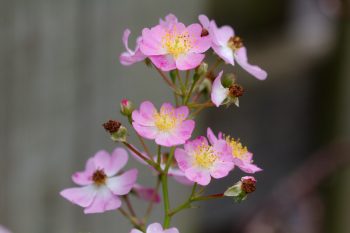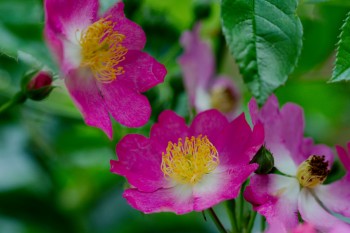
Pink Multiflora Rose
Last year in my Project 365 I posted a picture of this rose on Day 142, May 22, 2011. I know that you have to be a bit daft to actually plant a multiflora rose, particularly in a small garden. The great English rosarian, Graham Stuart Thomas, says in The Graham Stuart Thomas Rose Book (Sagapress, 1994):
It can best be described as an arching shrub, although its shoots will ramble into trees as high as 20 feet. Normally it makes a dense thicket of interlacing lax shoots, much like a blackberry. So dense is it, indeed, that when planted closely as a hedge it is rabbit-proof, and so thickly do its stems grow that it is becoming increasingly popular in the United States and also in Britain as a roadside plant, for its resilient thicket can hold a car which runs off the road. What a use for a rose! On the other hand, how lucky we are to be able to provide so pretty and sweet a shrub for such a use. It is claimed in America that it is “horse high, bull strong and goat tight.
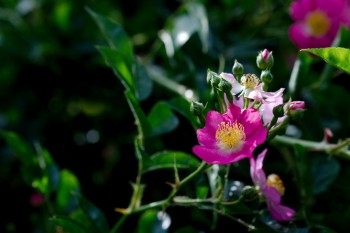
Pink Multiflora Rose
Thomas, of course, was a rose person. How bad can any rose be? On the other hand, Michael A. Dirr is a more general horticulturalist. He has a little different opinion of R. multiflora in his well respected, 1,187 page Manual of Woody Landscape Plants (Fifth Edition, Stipes Publishing, 1998).
Under the heading “Habit” he says, “A fountain with long, slender, recurving branches; eventually forming an impenetrable tangle of brush suitable only for burning.” About its growth rate he says, “fast; too fast for most farmers who have this species in their fields.” His description for “Culture” is, “Same as described under R. rugosa although this species is more invasive; tolerates dry heavy soils very well.”
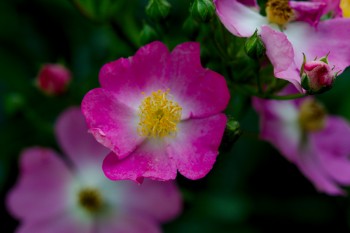
Pink Multiflora Rose
He goes on with an entry for “Landscape Value” of “None in the residential landscape; has received a lot of attention for conservation purposes; makes a good place for all the ‘critters’ to hide, yet can be a real nuisance for the birds deposit the seeds in fence rows and open areas, and soon one has a jungle; use this species with the knowledge that none of your gardening friends in the immediate vicinity will ever speak to you again.” Finally, he gives the following “Additional Notes.” “Utilized as an understock for budding the highly domesticated selections. Another species that appears resistant to black-spot and the typical rose diseases. I cannot overemphasize the invasive and greedy nature of this species. Have observed entire pastures/fields invaded and captured by the plant.”
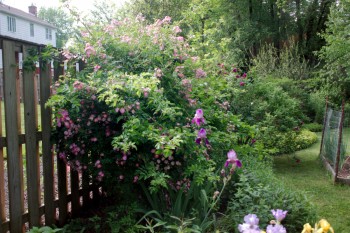
Pink Multiflora Rose
Having said all that, I’m a fan of places for all the critters to hide. Also, this pink sport or more likely a natural hybrid, was growing at the edge of the woods near my office. I dug up a small piece and within a month all that was growing there had been sprayed and killed. Some would argue that I should have let it all be killed but this pink version, which is very similar in almost every way to the species, seemed worth keeping. The difference it in the flowers — they are larger than the species, as well as being a beautiful, dainty pink. There are somewhat fewer of them, but still enough. The leaves seem entirely free of rust, mildew, and black-spot.
Actually, my ultimate goal is to try to produce a tetraploid version of this diploid rose. That would be valuable for hybridizing, because some many important roses are tetraploid. Whether I can actually do that remains to be seen. In the meantime, I’ll continue to prune this hard, trying to keep it contained, and I’ll do it with the knowledge that none of my gardening friends in the immediate vicinity will ever speak to me again.

